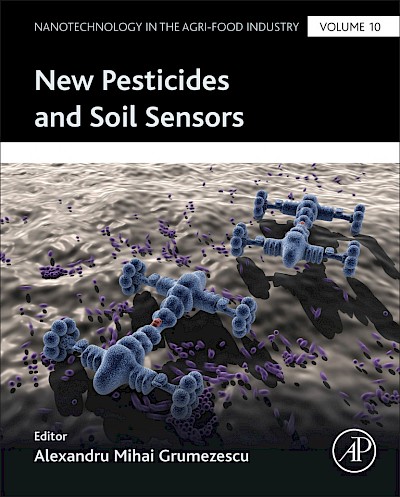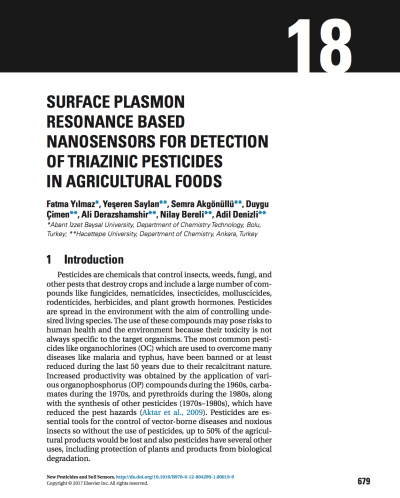New Chapter Published in New Pesticides and Soil Sensors
18th Chapter: Surface Plasmon Resonance Based Nanosensors for Detection of Triazinic Pesticides in Agricultural Foods
Introduction: Pesticides are chemicals that control insects, weeds, fungi, and other pests that destroy crops and include a large number of com- pounds like fungicides, nematicides, insecticides, molluscicides, rodenticides, herbicides, and plant growth hormones. Pesticides are spread in the environment with the aim of controlling unde- sired living species. The use of these compounds may pose risks to human health and the environment because their toxicity is not always speci c to the target organisms. The most common pesti- cides like organochlorines (OC) which are used to overcome many diseases like malaria and typhus, have been banned or at least reduced during the last 50 years due to their recalcitrant nature. Increased productivity was obtained by the application of vari- ous organophosphorus (OP) compounds during the 1960s, carba- mates during the 1970s, and pyrethroids during the 1980s, along with the synthesis of other pesticides (1970s–1980s), which have reduced the pest hazards (Aktar et al., 2009). Pesticides are es- sential tools for the control of vector-borne diseases and noxious insects so without the use of pesticides, up to 50% of the agricul- tural products would be lost and also pesticides have several other uses, including protection of plants and products from biological degradation.

